

Skovtrappen
Radical conservation, a living archive, a controlled ruin...
An old doctors house transformed into an urban forest made in collaboration between Aarhus School of Architecture, Emergency Architecture & Human Rights, Bedsted Byforskønnelse, Thisted Municipality, and the National Museum of Denmark
An old doctors house transformed into an urban forest made in collaboration between Aarhus School of Architecture, Emergency Architecture & Human Rights, Bedsted Byforskønnelse, Thisted Municipality, and the National Museum of Denmark
by Pierrick Chalivet, EAHR
Type of project:
Circular economy, Radical reuse, Radical conservation,
Transformation,
Local participation,
Historical research,
Storytelling
Year completed: 2024
Location:
Bedsted Thy, Denmark
With:
Aarhus School of Architecture, Emergency Architecture & Human Rights, Bedsted Byforskønnelse, Thisted Municipality, and the National Museum of Denmark
Circular economy, Radical reuse, Radical conservation,
Transformation,
Local participation,
Historical research,
Storytelling
Year completed: 2024
Location:
Bedsted Thy, Denmark
With:
Aarhus School of Architecture, Emergency Architecture & Human Rights, Bedsted Byforskønnelse, Thisted Municipality, and the National Museum of Denmark
Skovtrappen is a project exploring new ways to revitalize villages like Bedsted by combining radical conservation practices with storytelling that connects to the village’s history. The half-demolished ruin of an old doctor’s house is transformed into multi-leveled overgrown park that invites the local forest into the city center, while simoultaneously keeping the spatial memory of the doctor’s house alive. 90% of the materials came from within 1 km of the site, and all the concrete slabs were misproductions donated by the local concrete factory. Design and project lead was architect Mo Michelsen Stocholm Krag. Emergency Architecture (including me) provided architectural support and a lot of manual labour.
Skovtrappen keeps evolving in the custody of the local community as it adapts and forms to their uses and needs.
Skovtrappen keeps evolving in the custody of the local community as it adapts and forms to their uses and needs.
“Skovtrappen”
[eng: “the Forest Steps”]
[eng: “the Forest Steps”]

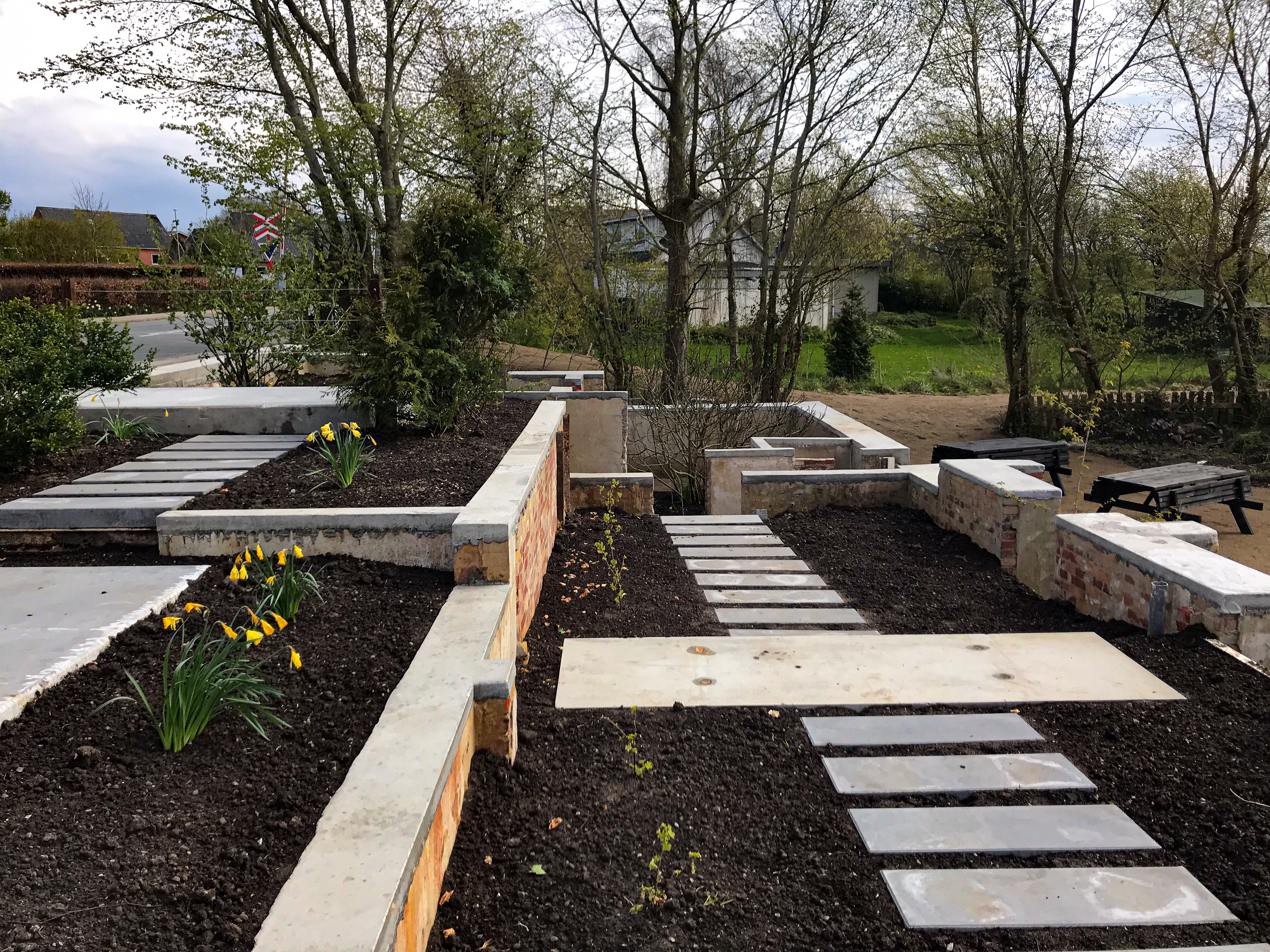
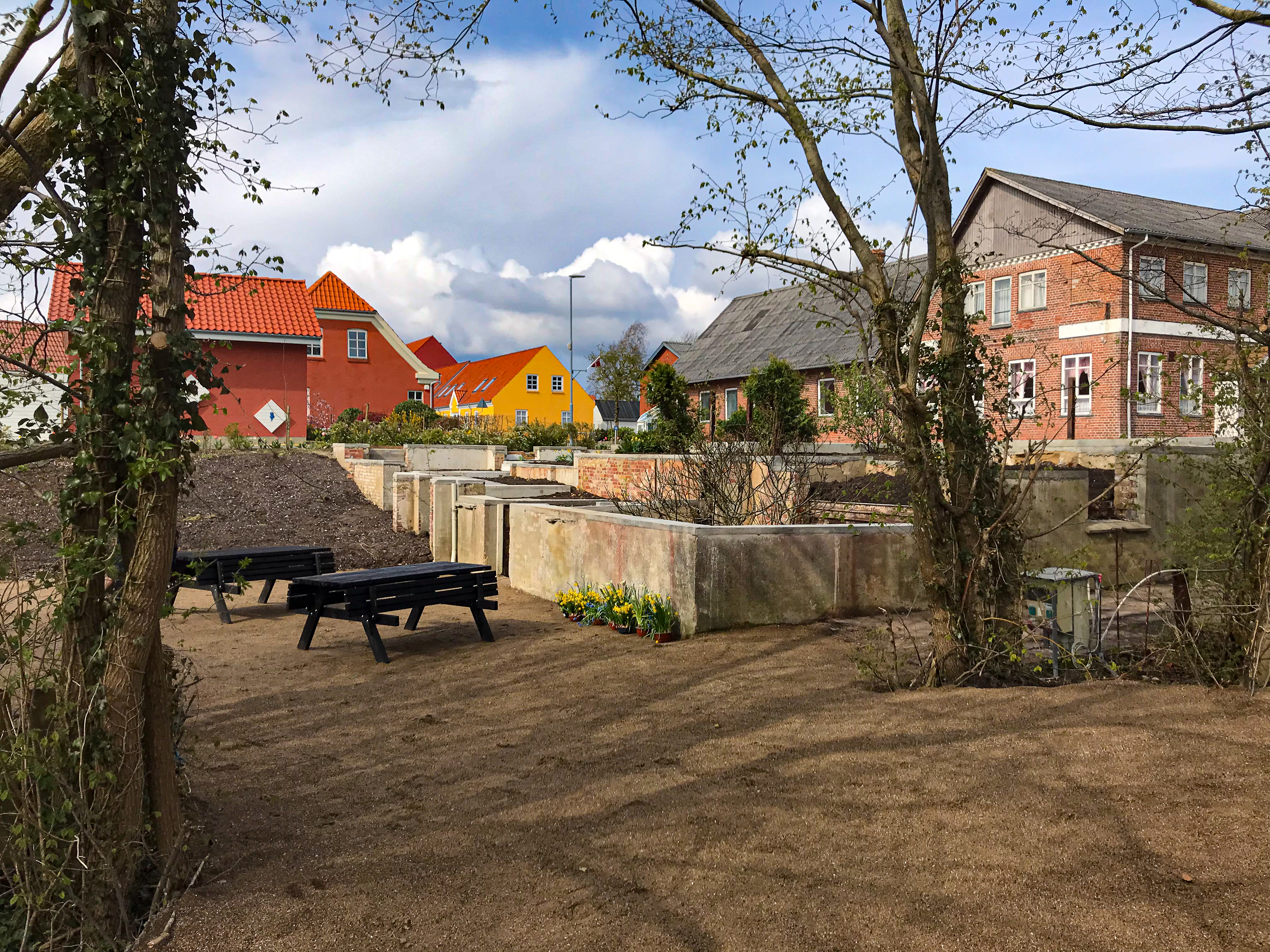



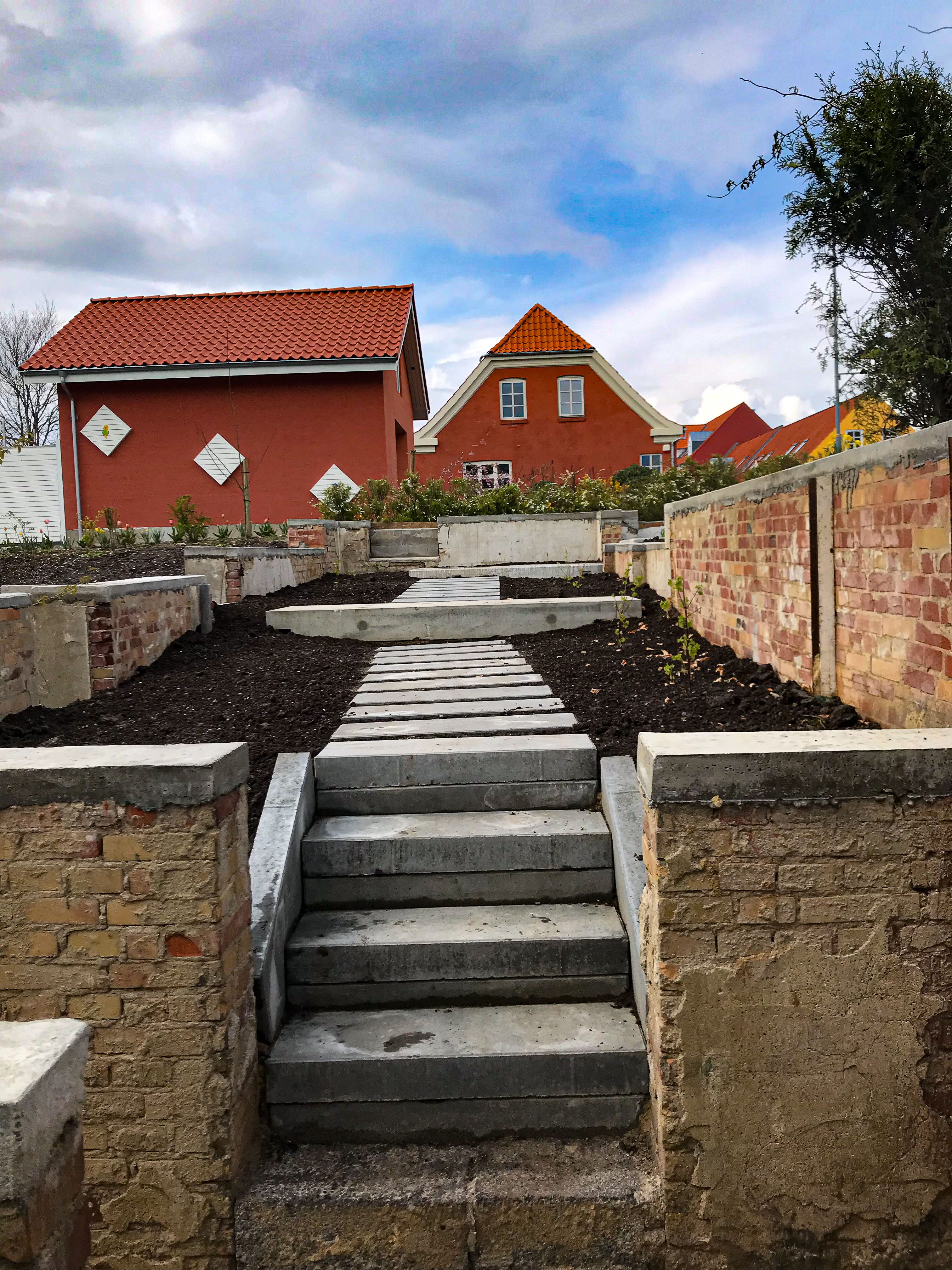
Background
Just like many other Danish towns, the small station city of Bedsted Thy is suffering from an increase in rural to urban migration. Centralisation of services, a decline in work opportunities and a loss of tourism has pushed many residents to move closer to the bigger cities - leaving behind many empty buildings. Some of which become dangerous as they decline, and a mark of shame for the local residents.
Traditionally, the choice has been between expensive and continous renovation or state sponsored demolitions. Naturally this approach has led to an increase in empty plots in the middle of town, erasing local heritage and reducing overall quality of the space. Not to mention the issues of wastefulness and sustainability.
Just like many other Danish towns, the small station city of Bedsted Thy is suffering from an increase in rural to urban migration. Centralisation of services, a decline in work opportunities and a loss of tourism has pushed many residents to move closer to the bigger cities - leaving behind many empty buildings. Some of which become dangerous as they decline, and a mark of shame for the local residents.
Traditionally, the choice has been between expensive and continous renovation or state sponsored demolitions. Naturally this approach has led to an increase in empty plots in the middle of town, erasing local heritage and reducing overall quality of the space. Not to mention the issues of wastefulness and sustainability.


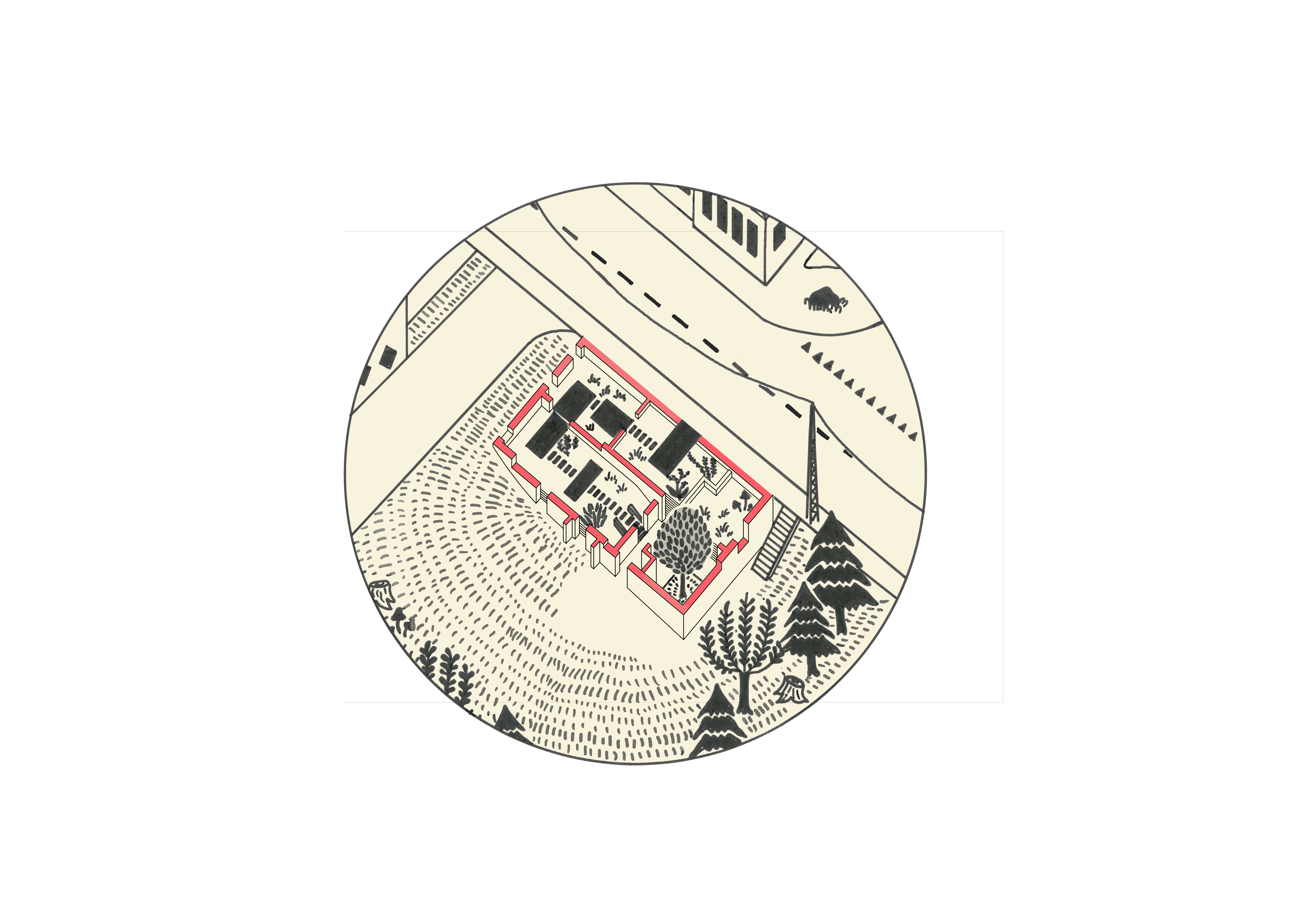
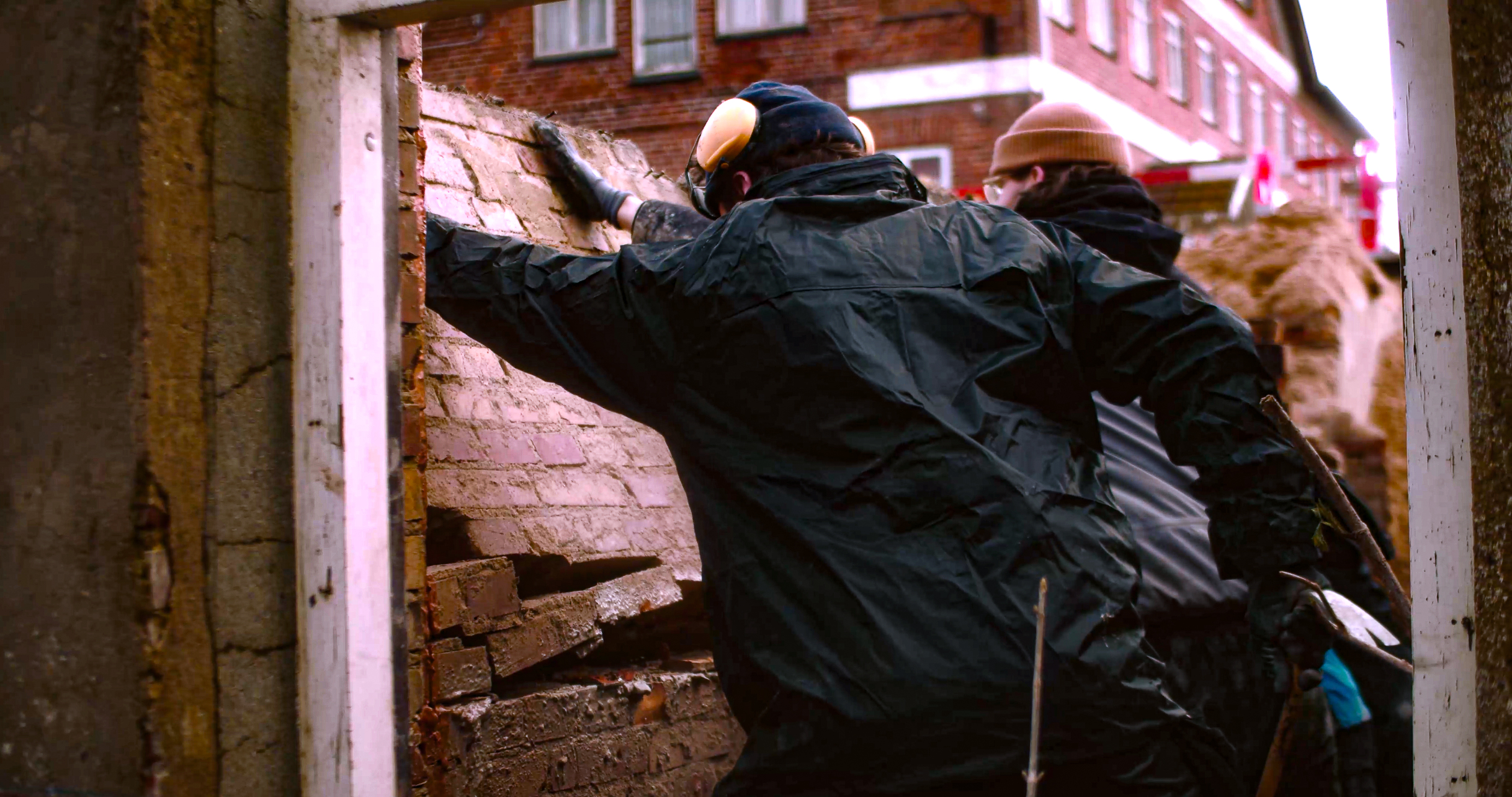


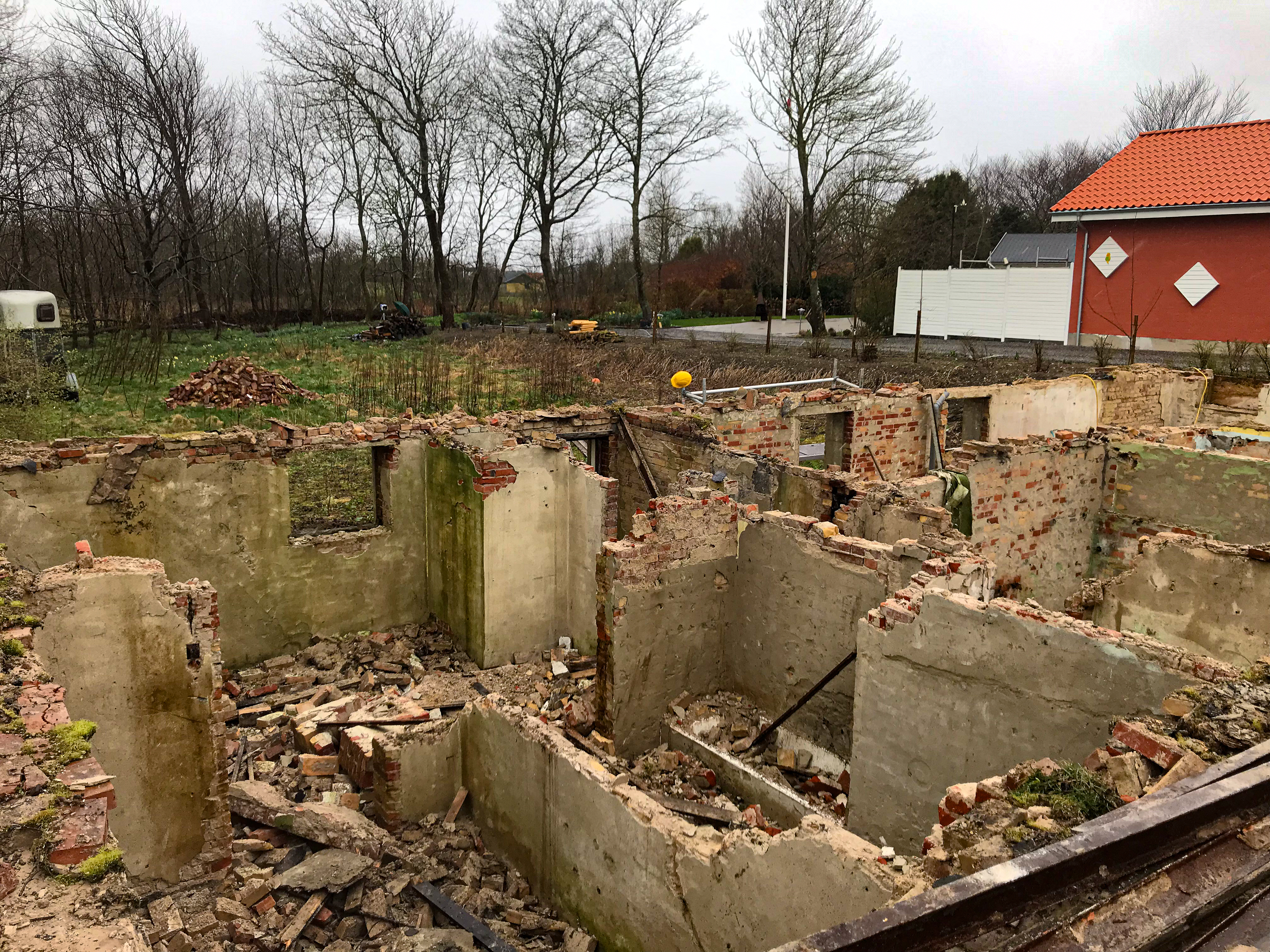
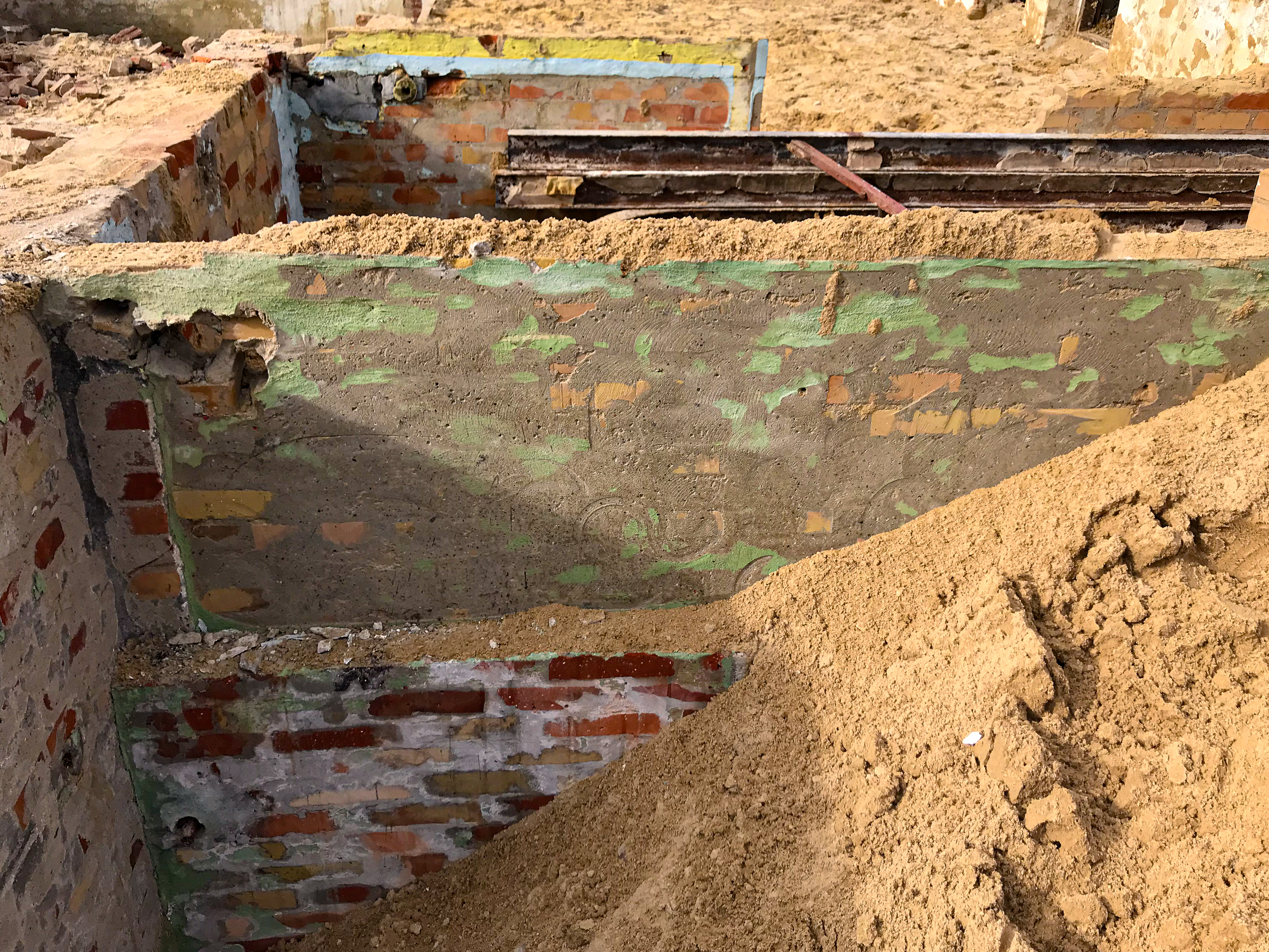
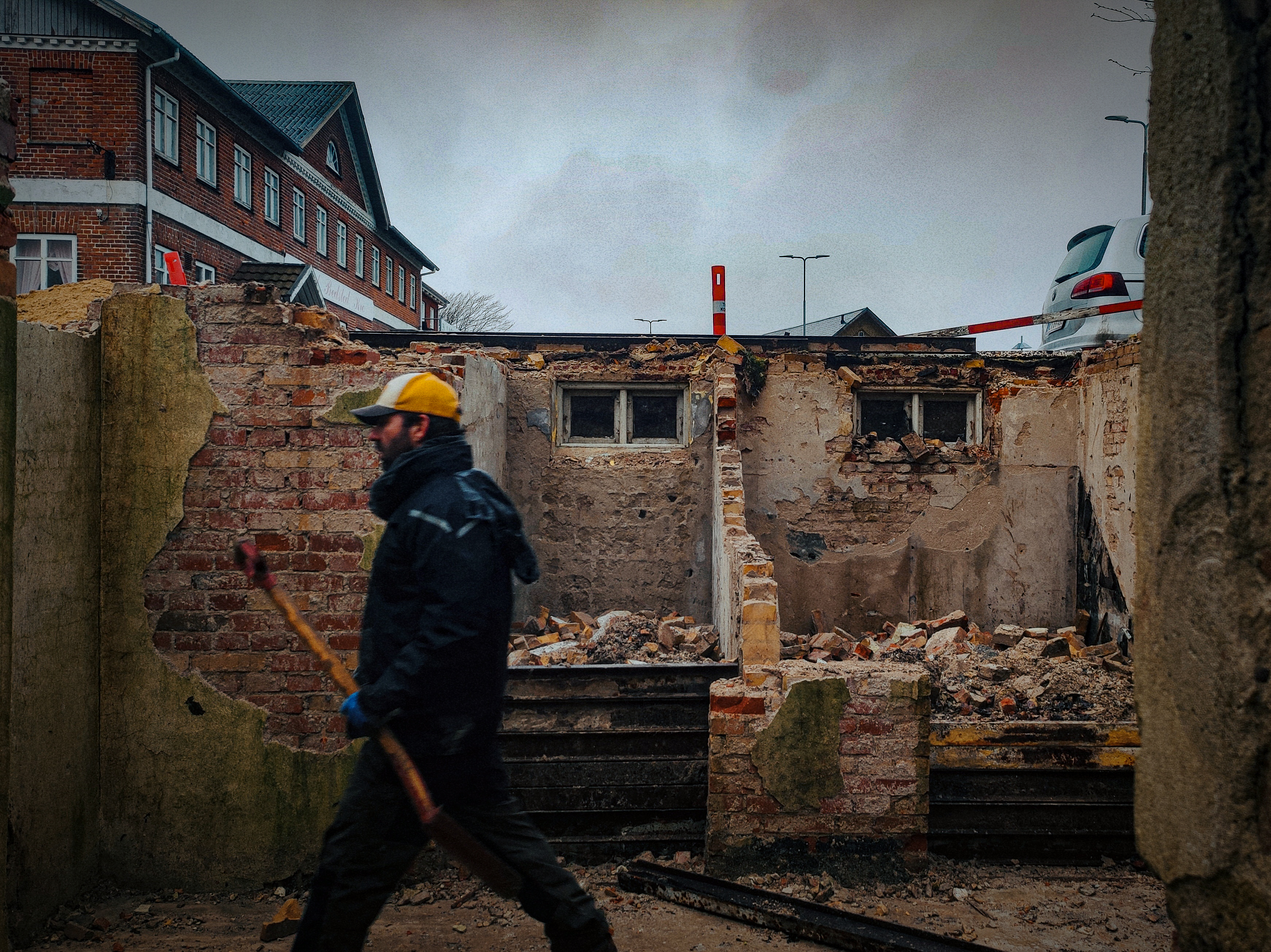
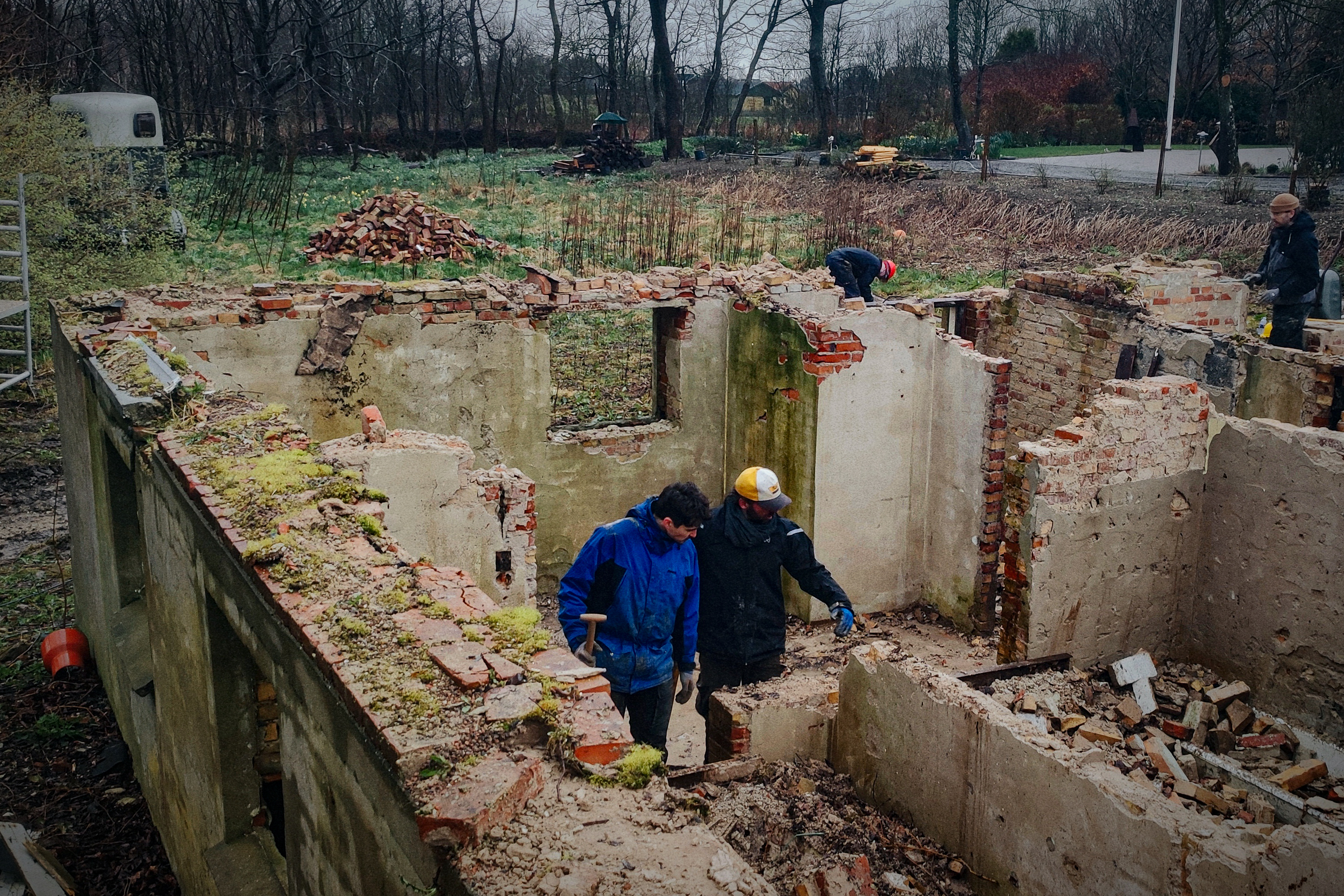



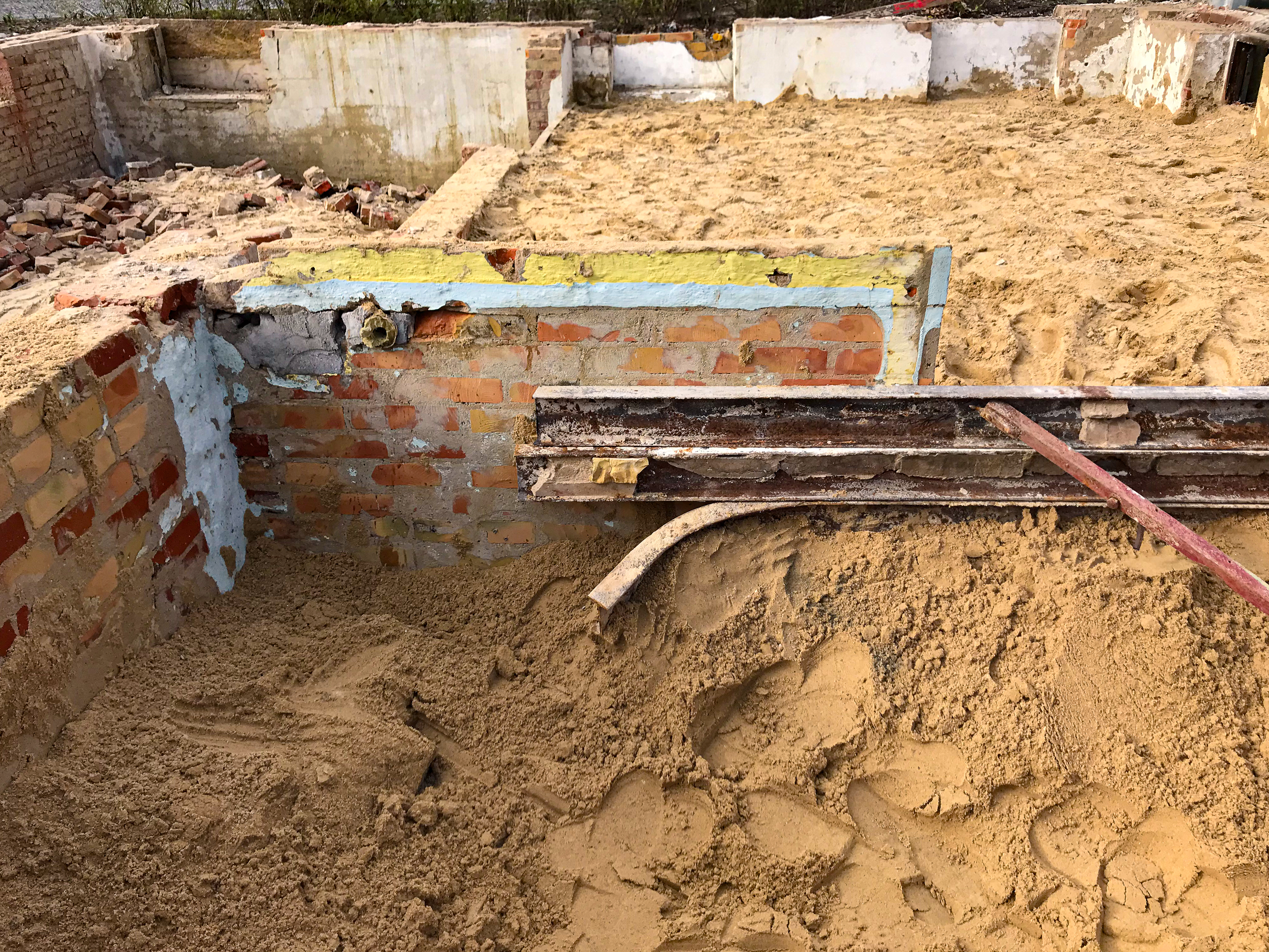
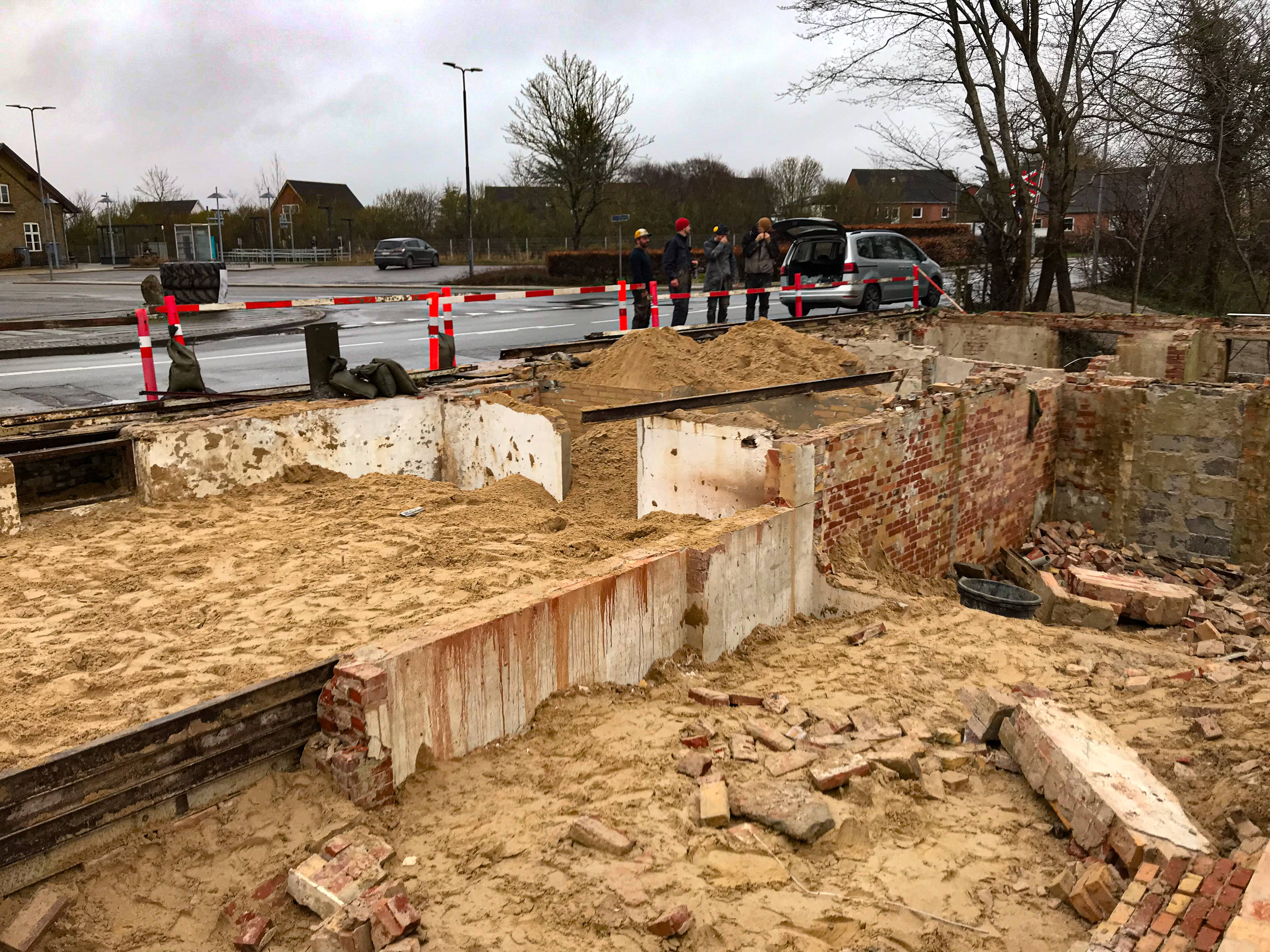
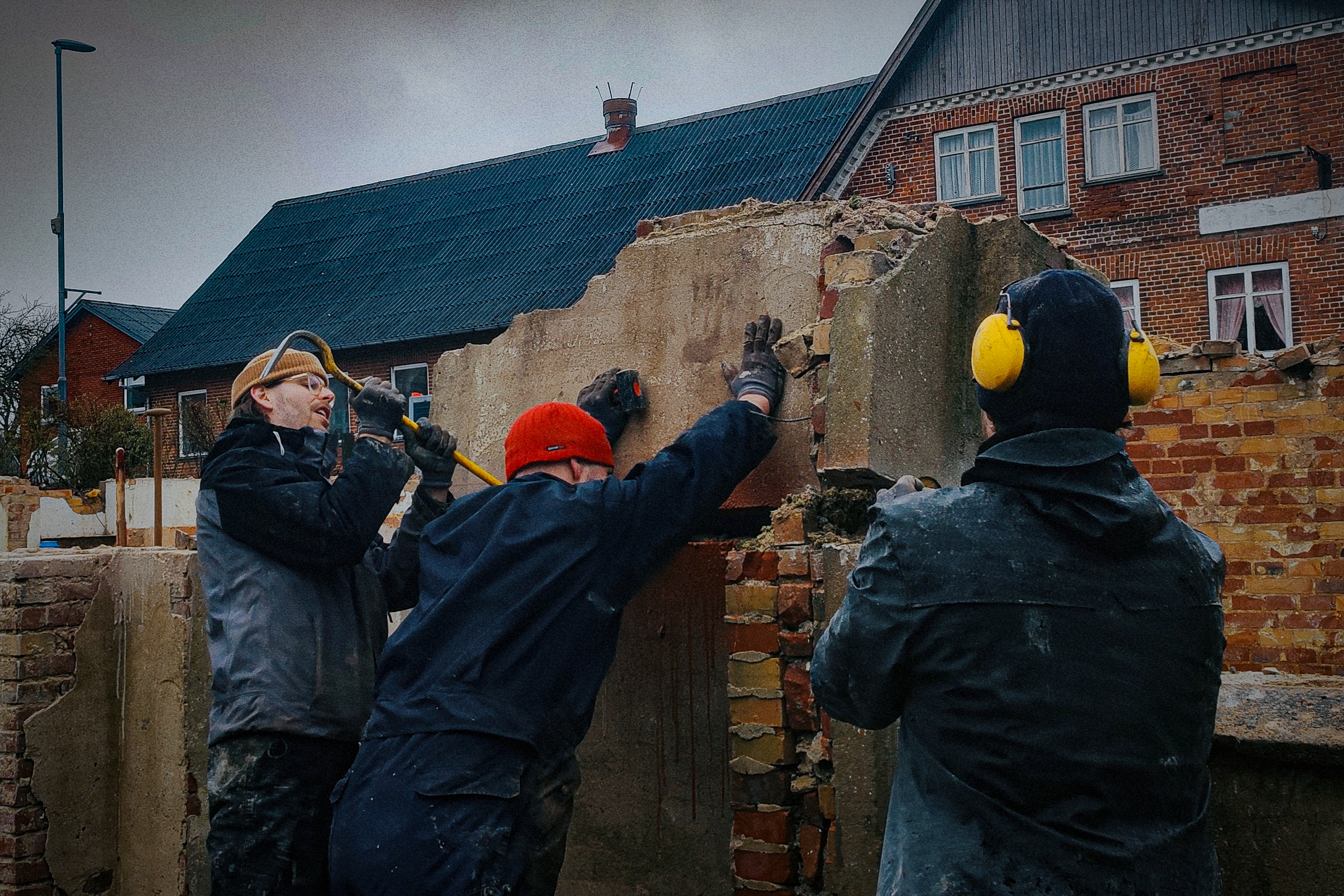

Local support and co-creation
The support and sense of ownership of the local city renewal organisation proved essential to the project. They assisted with tools, expertise, various machinery, and a lot of snacks for us construction workers. They also took over the project the moment we looked away, and added trees, bushes, a very well designed handrail and some benches. Skovtrappen was wholeheartedly adopted and added to by the local community, which is the biggest compliment we could receive.
More about the project can be found on the instagram of Aarhus Arkitektskole
The support and sense of ownership of the local city renewal organisation proved essential to the project. They assisted with tools, expertise, various machinery, and a lot of snacks for us construction workers. They also took over the project the moment we looked away, and added trees, bushes, a very well designed handrail and some benches. Skovtrappen was wholeheartedly adopted and added to by the local community, which is the biggest compliment we could receive.
More about the project can be found on the instagram of Aarhus Arkitektskole
Historical audiowalk
During the project, local stories were collected and presented in the form of a prototype audiowalk around the town, allowing residents and visitors to interact with the stories through QR-codes placed around town. I was the main researcher, writer, sound designer and editor of the audiowalk, with gracious support from Nanna Hauge Kristensen. The audiowalk can be found here
During the project, local stories were collected and presented in the form of a prototype audiowalk around the town, allowing residents and visitors to interact with the stories through QR-codes placed around town. I was the main researcher, writer, sound designer and editor of the audiowalk, with gracious support from Nanna Hauge Kristensen. The audiowalk can be found here
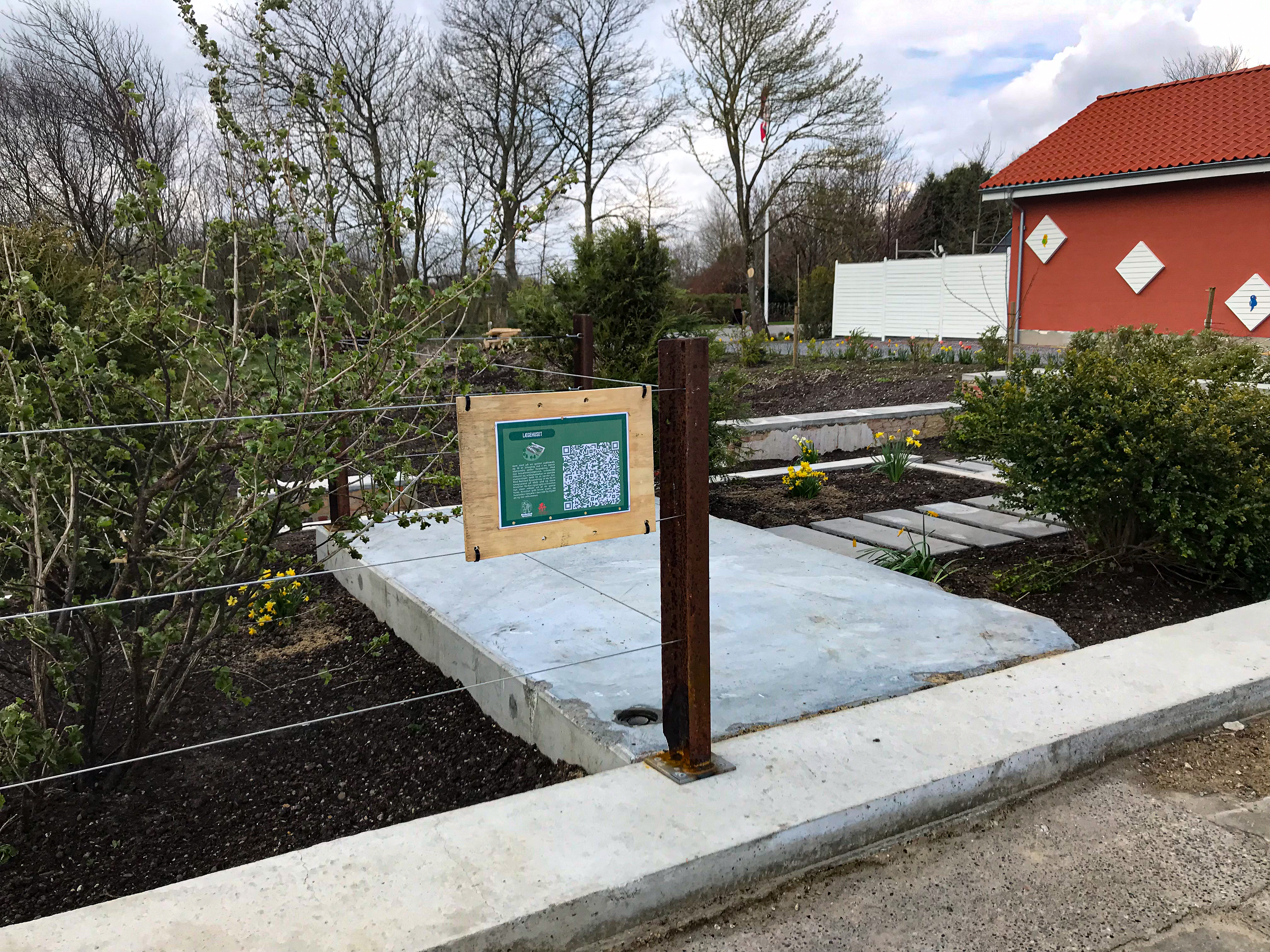
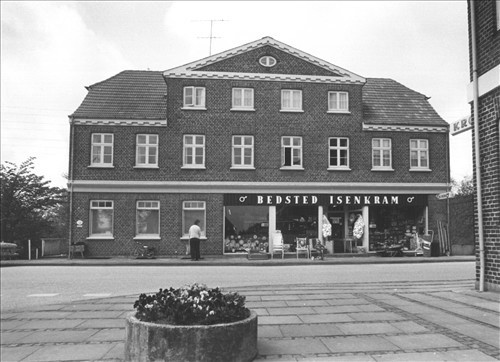



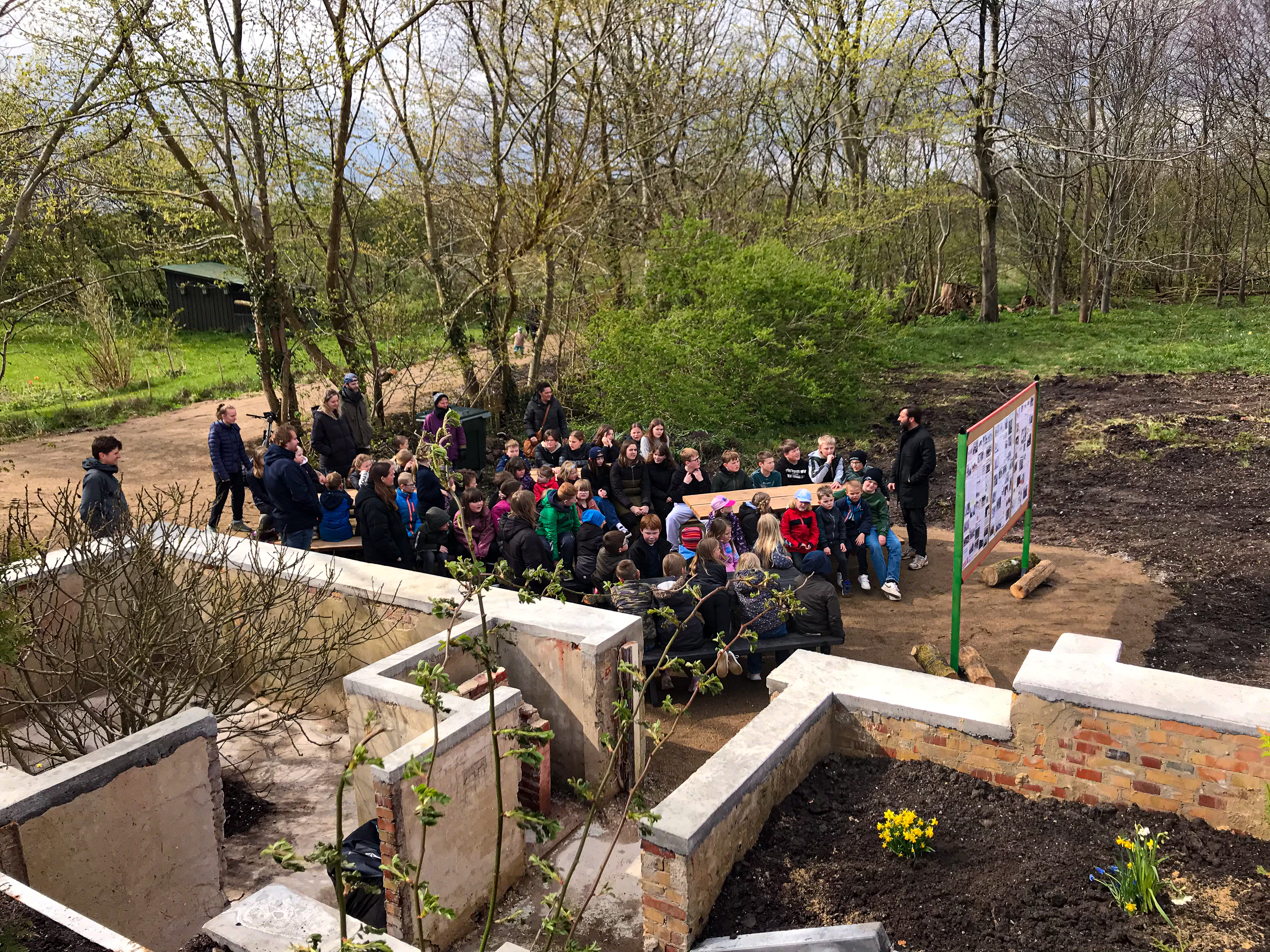
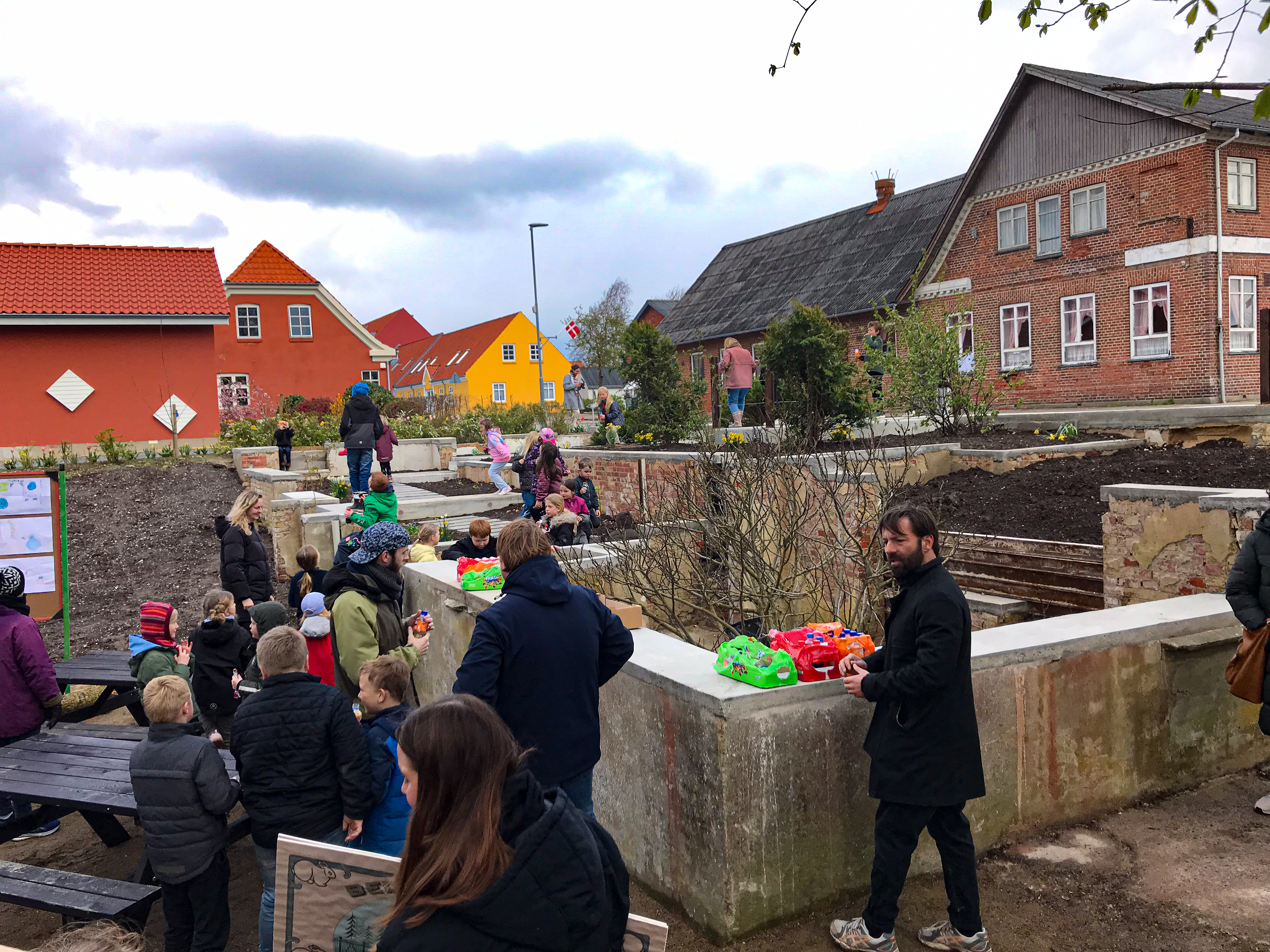

Drawing competition
As part of a larger overarching experiment in Bedsted, called Utopia Thy, we organised a drawing competition for the kids at the local school, asking them to imagine their town as a forest city. Forest playgrounds, ice cream stalls, sensual gardens, nature museum, duck ponds, treetop camping and of course a water-themed obstacle course for forest monsters. The entries bristle with joy and imagination, and inspire our work within Utopia Thy going forward. The winner was the idea of a nature museum in the old abandoned station building - a building we hope to be working with in future projects.
As part of a larger overarching experiment in Bedsted, called Utopia Thy, we organised a drawing competition for the kids at the local school, asking them to imagine their town as a forest city. Forest playgrounds, ice cream stalls, sensual gardens, nature museum, duck ponds, treetop camping and of course a water-themed obstacle course for forest monsters. The entries bristle with joy and imagination, and inspire our work within Utopia Thy going forward. The winner was the idea of a nature museum in the old abandoned station building - a building we hope to be working with in future projects.


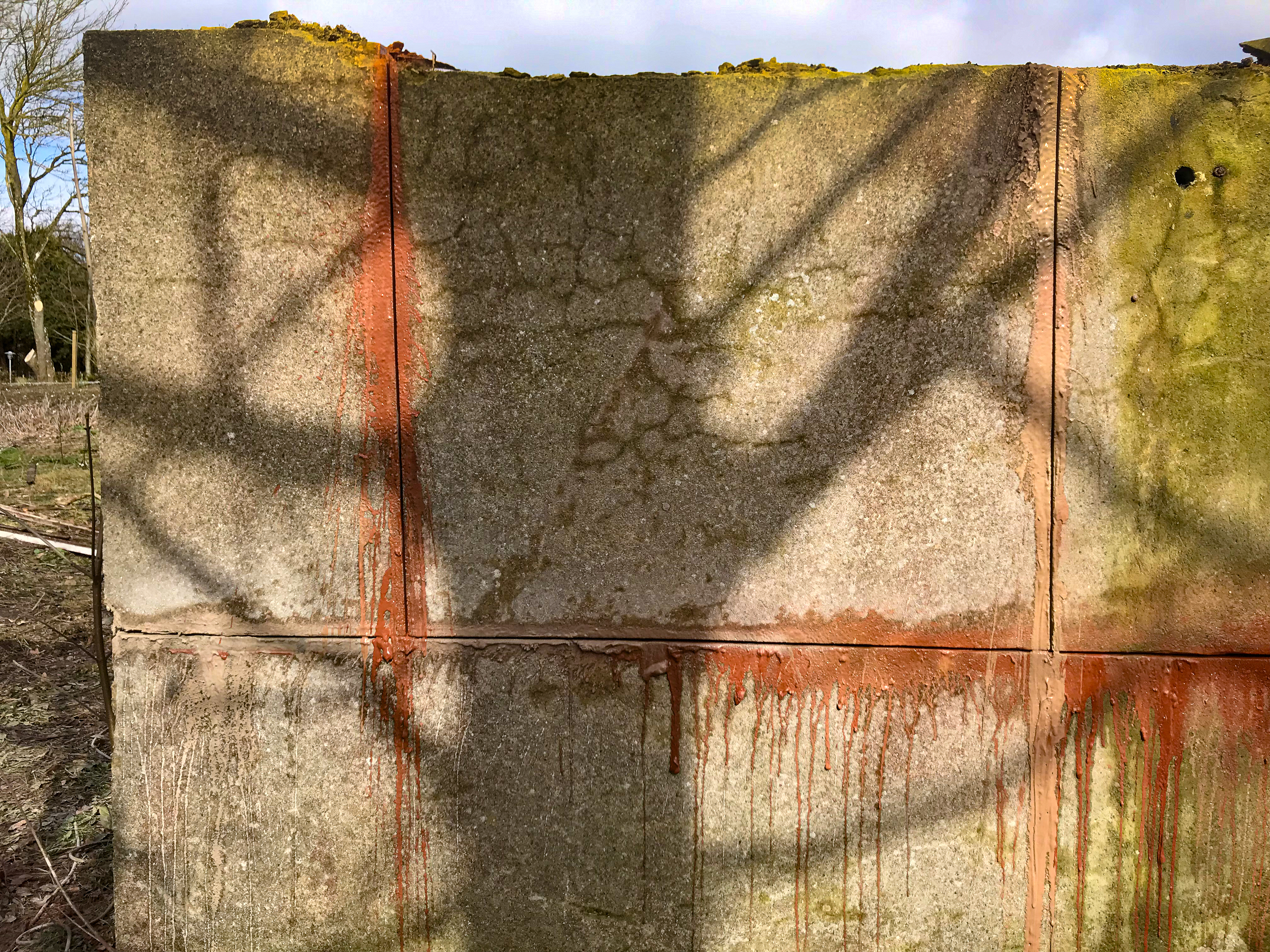
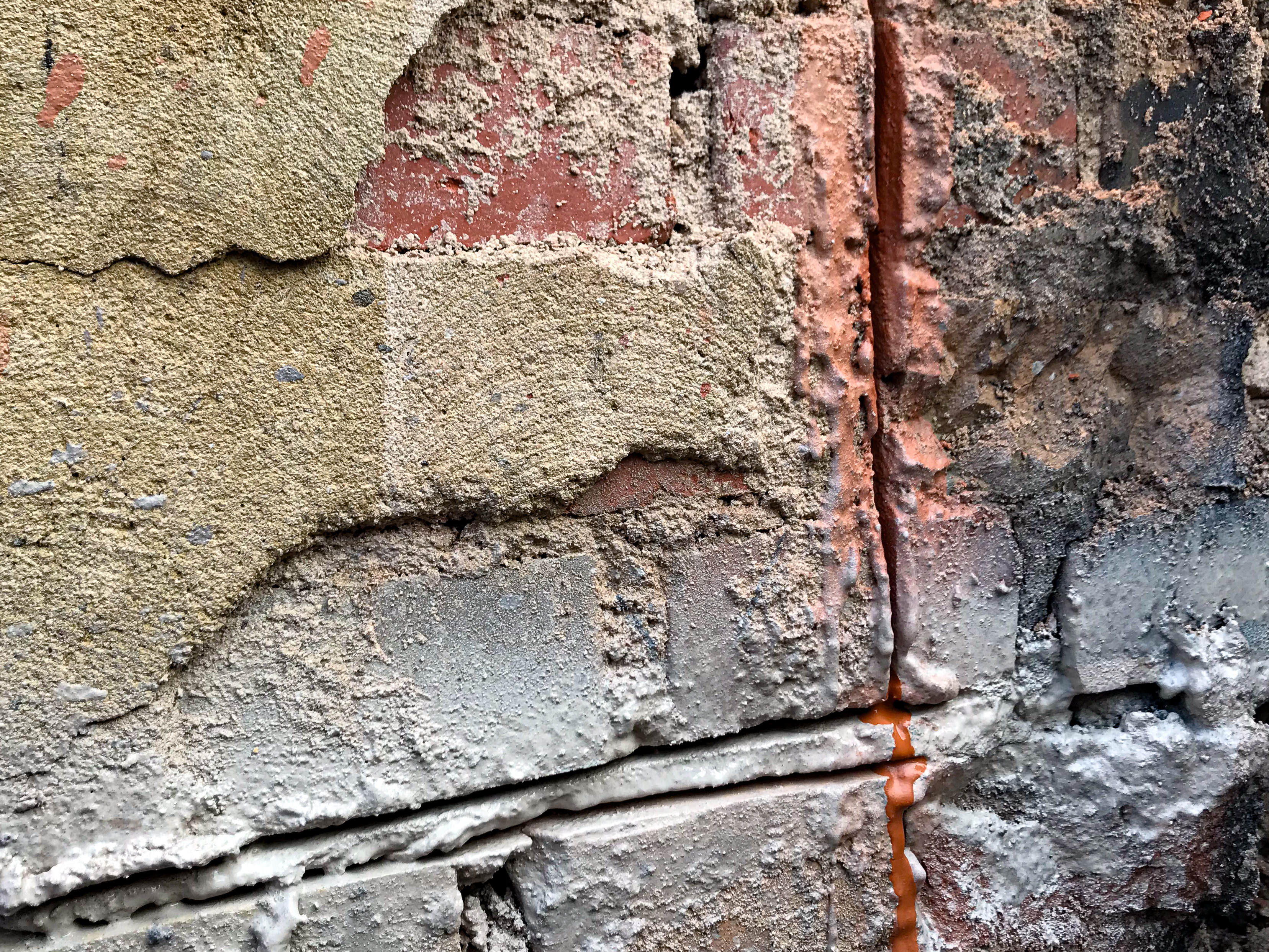
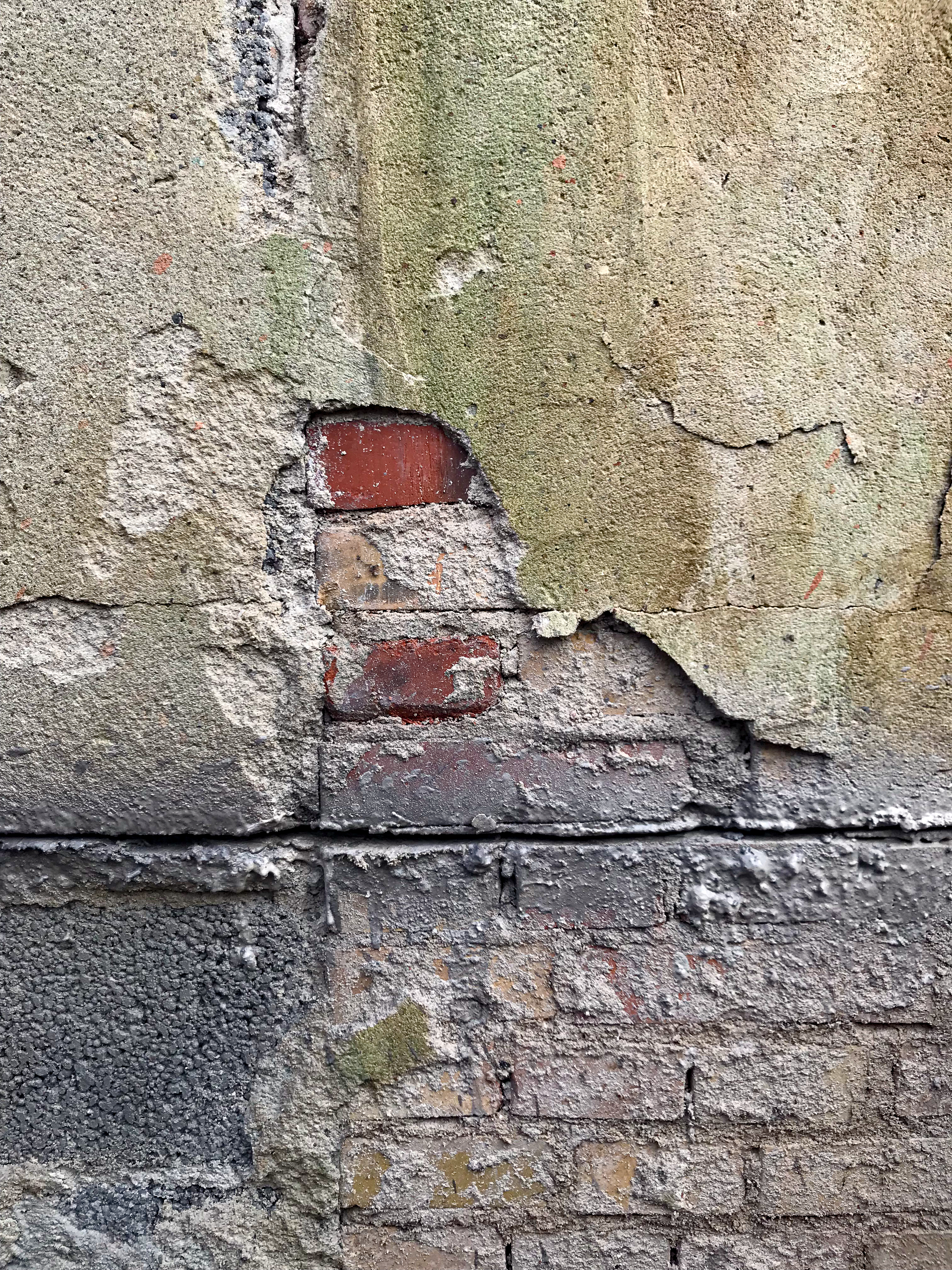
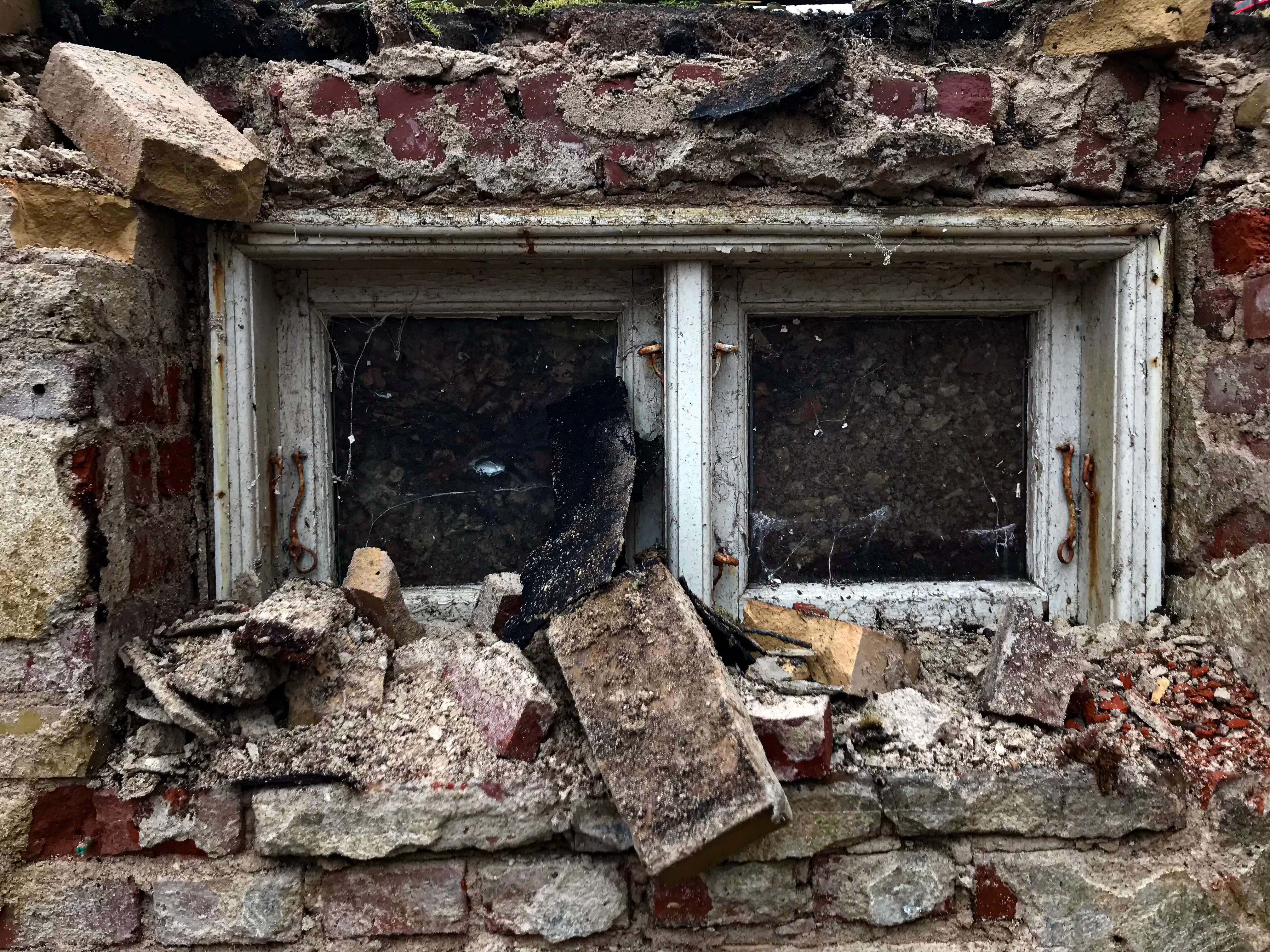

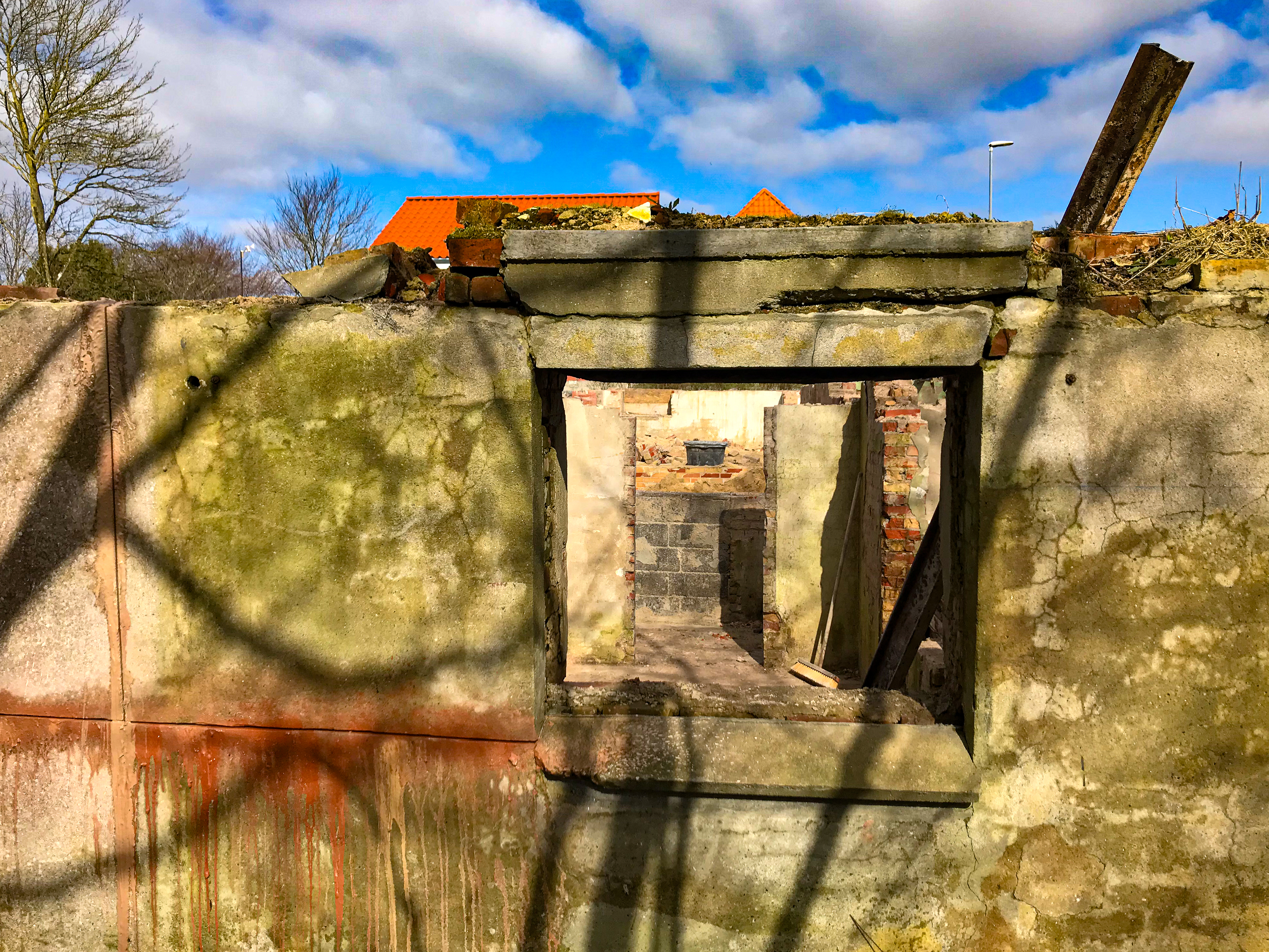
Skovtrappen was developed in collaboration with locals in Bedsted, the Aarhus School of Architecture, Thisted Municipality, the National Museum of Denmark, and Emergency Architecture & Human Rights.